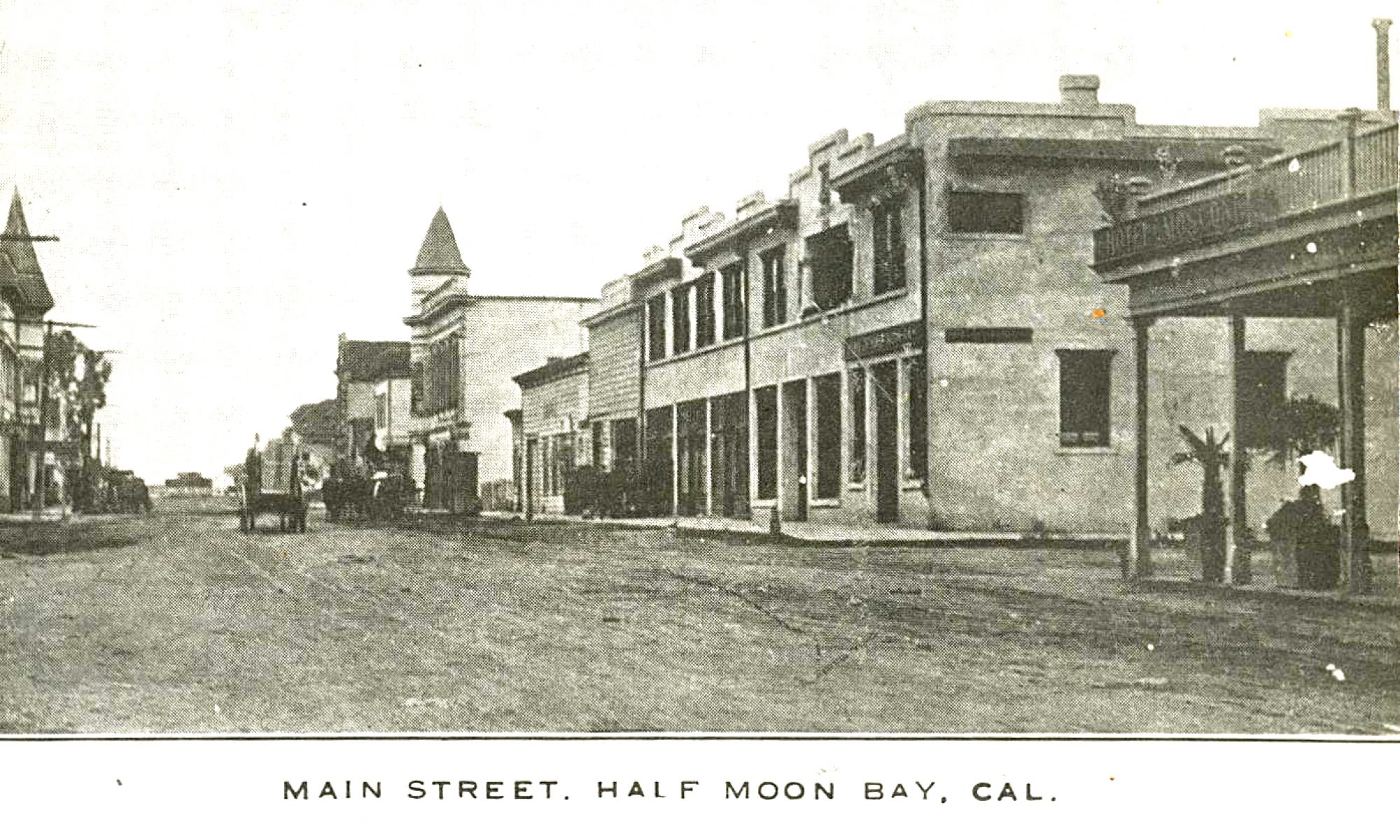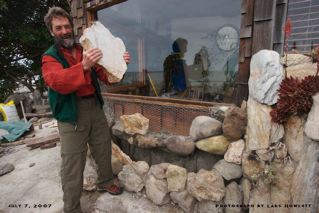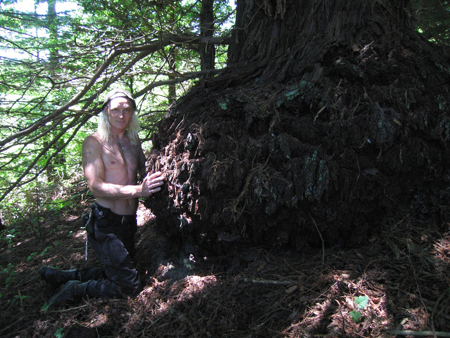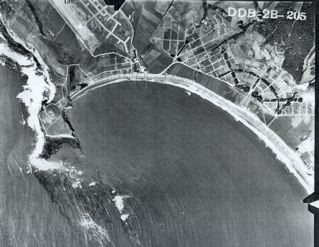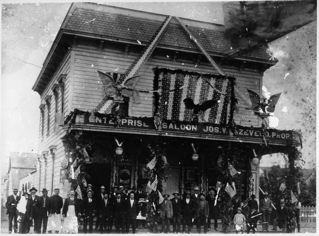What’s New At Michael Powers’ Ocean Studio..
Dear partners & friends of Ocean Studio,
Yeah, it was a bit of work…
…but now (the exterior) of the new & expanded Ocean Studio is done at last (whew!)
Below: Here’s another image from our building of the new Ocean Studio, of my
son Marc with the burl we are going to cut to make a beautiful
conference table for the new studio – yet another fun adventure!
1943: Pillar Point-Princeton-El Granada
The old Coastside, where “everybody talked Italian” (1)
Note: I wrote this story in the early 1990s.
It was the 1940s, the beginning of World War II and the army was building a several million dollar airstrip at Princeton. When Rina and Italo Pacini received the official notice to vacate their condemned two-bedroom rented house nearby, they did not take it seriously.
“Italo was from the ‘Old Country,’ explained Rina, “and as old-fashioned people we didn’t believe we would really have to move.”
The first notice had given the farming family a comfortable three months but they were taken by surprise when the three-day order to vacate arrived in the mail. “We had to get out because they needed our site for the new airport,” Rina said.
Although they didn’t have much time to pack their personal belongings, gather the tools and round-up the horses, the Pacinis would hardly miss the old house that once stood behind the Princeton Inn.
“The water came in when it rained and the wallpaper buckled when the wind blew,” she recalled matter-of-factly. Skunks were serious pests and sometimes they died beneath the house.
“One times friends came a rat was rotting between the walls. My husband said, “Thank God, it’s not a cow!”
…to be continued…
1981:The Pilings, All That Was Left Of Amesport Pier
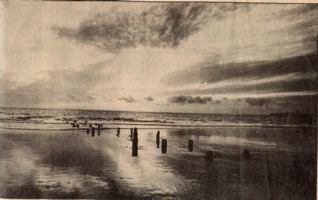 (Photo courtesy Maria Demarest.)
(Photo courtesy Maria Demarest.)
The remains of Amesport Pier (at Miramar) built circa 1865 and repaired in the 1900s. And when the Mirada Road locals enjoyed their drinks around sunset at Albert’s Miramar Hotel, they made bets on when they wouldn’t see the pilings any more. I never did find out who won.
The Art of Rumrunning & Other Stories
During Prohibition rumors circulated that the escape artist Harry Houdini had been hired by the US Treasury to dive for a hidden cache of booze at Princeton bay. In the mid-1920s the indie Peninsula Studios, located in Burlingame, made a film at Princeton called “Let Women Alone,” starring Wallace Beery. Printed on fragile nitrate film, the “Let Women Alone” is assumed lost, but if found might provide scenes of early Princeton.
In the “Continental Op,” a collection of pieces by Dashiell Hammet, the author includes a story about Half Moon Bay called “The Girl with the Silver Eyes.” A young woman is missing and she’s tracked down to Half Moon Bay, to a place called the “White Shack” run by “Tin Star Joplin.” The “White Shack” is a prohibition-era roadhouse and the place where booze is picked up and distributed to San Francisco.
“The dope is that,” writes Hammet, “half the booze put ashore by the Pacific rum fleet is put ashore at Half Moon Bay.”
Poem: Cell Phone Love
For Lauren
I go into the workplace
Without love
No one has caressed me
No kiss goodbye
The home is cold
The wind outside is cold
The world is cold
I am left cold
The phone at work is shrill
Belying its promise
I answer. I must.
I listen and I talk
I am warmed by the voice
By the pleasantness
By the interest and the implied smile
By the quiet humor
I am in love
With someone a thousand miles away
Whom I shall never see
With whom I shall never speak again
I am in love
I am warm
I am happy
Love comes from within. I smile
Anonymous
“Mystery of Half Moon Bay” Gets A Plug from Barry Parr
at <a href="Coastsider.com" http://coastsider.com/ Thank you!
You can view the 60-minute doc there, too. Very painless and fun to see the characters who were here. Here’s the link: http://coastsider.com/index.php/site/news/2097/
The Art of Rumrunning & Other Stories
According to “Rum War At Sea,” by Malcolm Willoughby, a book published by the US government (and not likely to be found on the “best seller” list) during Prohibition Half Moon Bay was the biggest supplier of illegal booze on the West Coast.
In the 1920s the Coastside was sparsely populated. While there was an abundance of isolated beaches, where the booze was landed, there was a lack of prohibition agents to arrest anyone. One reason was because the roadhouse owners had their “connections.” If an agent was headed for the Coastside to raid the Patroni House or the Miramar Beach Inn or the Moss Beach Distillery, a quick phone call alerted the owners in advance–so they could hide the bottles of whiskey in secret hiding places that had been custom-made by local carpenters.
…to be continued…
